Last Updated on June 26, 2024
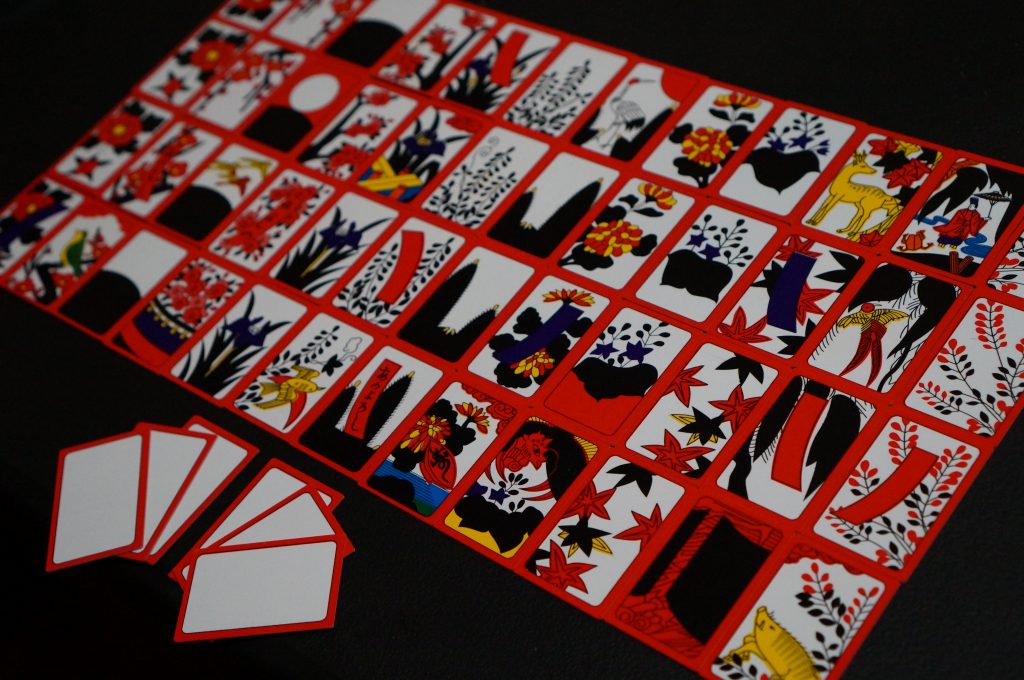
Here, I gather my Japanese Hanafuda playing cards.
12 months. 4 seasons. Many flowers. The term “Hanafuda” directly translates to English as “flower cards.” Each of the Japanese flower cards is symbolic of a flower from one of the twelve months displayed during one of the four seasons.
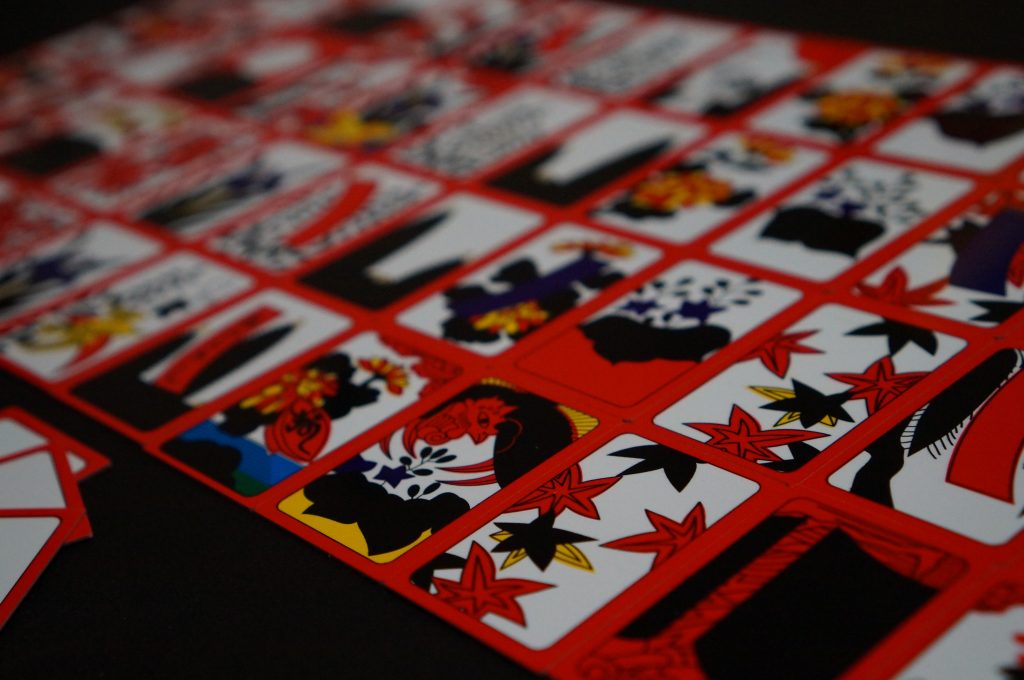
It’s an interesting card game and very different from western playing cards.
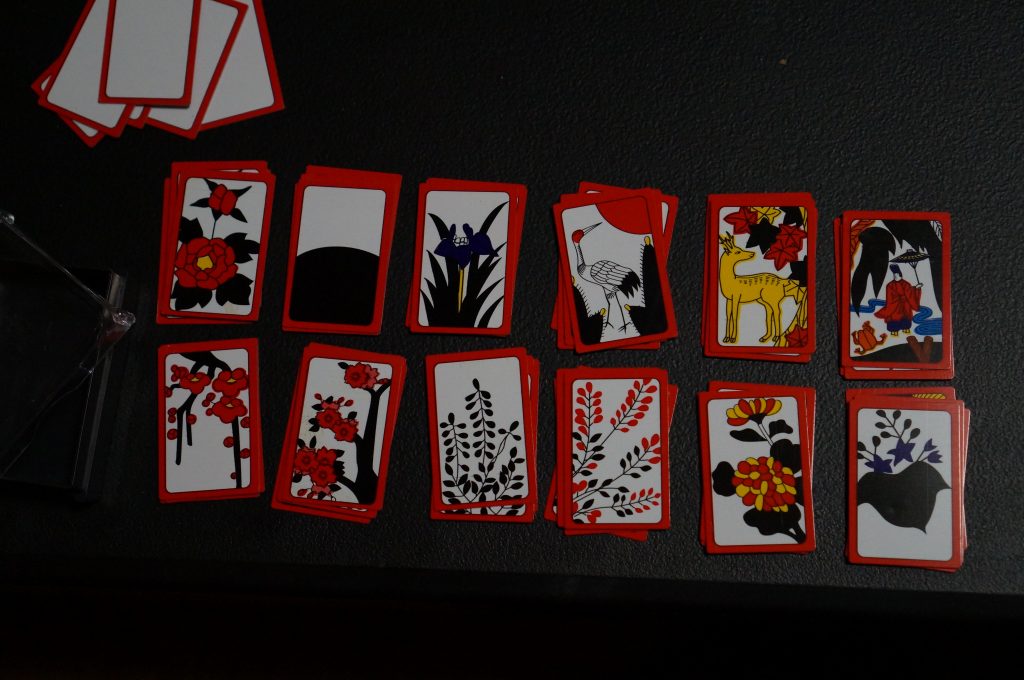 The cards are small and made of very thick cardstock-like paper. They have an interesting glossy feel to them. You really can’t bend the cards all that much; not like you would when shuffling a regular deck of cards. I also have a special appreciation for the artwork on the flower cards. I think it is a shame Hanafuda playing cards are not more popular in America.
The cards are small and made of very thick cardstock-like paper. They have an interesting glossy feel to them. You really can’t bend the cards all that much; not like you would when shuffling a regular deck of cards. I also have a special appreciation for the artwork on the flower cards. I think it is a shame Hanafuda playing cards are not more popular in America.
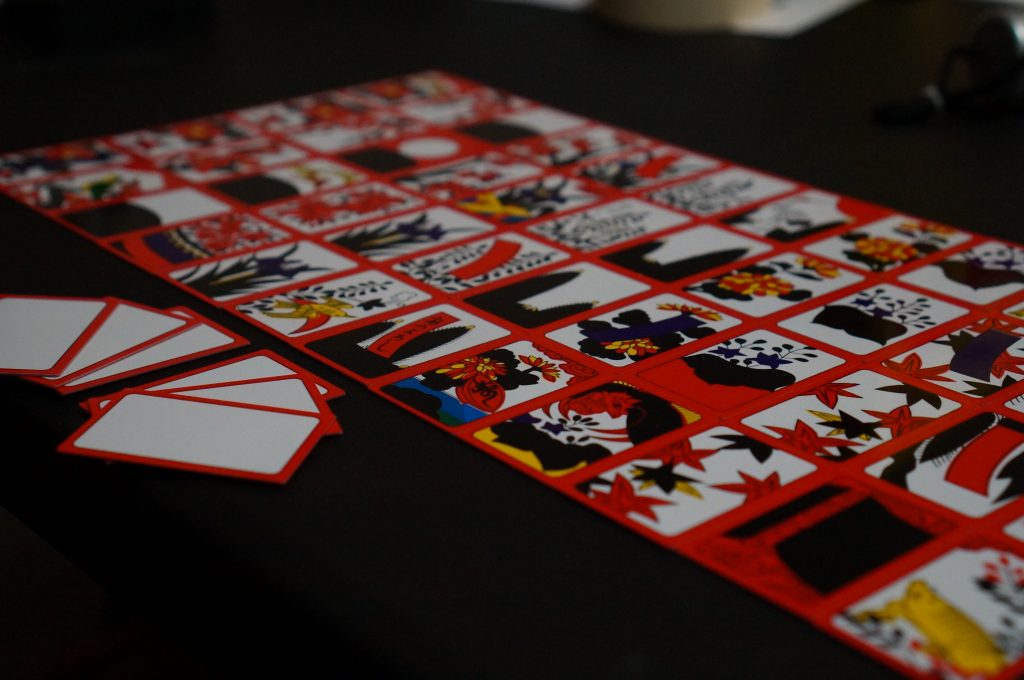
Hanafuda cards are a distinctive and culturally rich part of Japanese gaming history. These intricately designed cards, adorned with floral motifs and seasonal imagery, have evolved over centuries and played a significant role in Japanese culture. From their origins in the Edo period to their modern-day significance, the story of Hanafuda cards is both fascinating and deeply intertwined with Japan’s social and cultural evolution. At the end of this journey, we’ll also explore their intriguing link to the banishing of oni masks.
Origins of Hanafuda Cards
Early Beginnings
The history of Hanafuda cards can be traced back to the 16th century, when Portuguese traders first introduced playing cards to Japan. These early Western cards, known as “karuta” (from the Portuguese word “carta”), quickly gained popularity among the Japanese. However, gambling and card games soon became a target for regulation by the Tokugawa shogunate, which sought to curb the spread of gambling through repeated bans.
The Evolution of Design
To circumvent these bans, Japanese card makers began to create new types of cards that did not resemble Western playing cards. This led to the development of various styles of Japanese cards, including the earliest versions of what would eventually become Hanafuda. By the late 18th century, Hanafuda cards had taken on their now-familiar form, consisting of 48 cards divided into 12 suits, each representing a month of the year and featuring different flowers and plants.
The Structure and Art of Hanafuda
Card Composition
Hanafuda cards are small and thick, traditionally made from layers of paper and card stock glued together and coated for durability. The deck is divided into 12 suits, each associated with a specific month and plant:
- January: Pine (Matsu)
- February: Plum Blossom (Ume)
- March: Cherry Blossom (Sakura)
- April: Wisteria (Fuji)
- May: Iris (Ayame)
- June: Peony (Botan)
- July: Bush Clover (Hagi)
- August: Susuki Grass (Susuki)
- September: Chrysanthemum (Kiku)
- October: Maple (Momiji)
- November: Willow (Yanagi)
- December: Paulownia (Kiri)
Each suit typically consists of four cards: two plain cards, one ribbon card, and one special card. These special cards often depict animals, scenes, or mythical creatures.
Artistic Significance
The artwork on Hanafuda cards is highly stylized and symbolic, reflecting Japan’s deep appreciation for nature and the changing seasons. The designs are not just decorative but also carry cultural and historical significance, with many motifs linked to Japanese poetry, folklore, and seasonal festivals.
Hanafuda Games and Popularity
Traditional Games
Hanafuda cards are used to play a variety of games, the most famous being “Koi-Koi” and “Hana-Awase.” Koi-Koi is particularly popular and involves two players trying to create sets of cards for points, with strategic gameplay elements that add depth and excitement.
The Role of Nintendo
In the modern era, the company most closely associated with Hanafuda cards is Nintendo. Founded in 1889 by Fusajiro Yamauchi, Nintendo started as a manufacturer of handmade Hanafuda cards. The company’s name itself means “leave luck to heaven,” reflecting the traditional and cultural heritage embedded in the card game. Nintendo’s success with Hanafuda cards laid the foundation for its later ventures into video games and global entertainment.
Cultural Impact and Modern Revival
Symbolism and Art
Hanafuda cards have had a lasting impact on Japanese culture, both as a form of entertainment and as a symbol of artistic expression. The cards are often featured in various forms of media, including literature, films, and anime, highlighting their cultural significance and timeless appeal.
Contemporary Uses
In recent years, there has been a resurgence of interest in Hanafuda, both within Japan and internationally. Artisans continue to produce beautiful, handcrafted Hanafuda cards, and modern technology has introduced digital versions of Hanafuda games, making them accessible to a new generation of players.
Hanafuda and Oni Masks
The Connection to Oni Masks
One of the more fascinating aspects of Hanafuda cards is their connection to the cultural practice of banishing oni masks. Oni, in Japanese folklore, are malevolent spirits or demons often depicted with grotesque features and horned masks. These beings are typically associated with misfortune and are believed to bring bad luck or harm.
During certain festivals and ceremonies, it is customary to banish or ward off oni to protect against evil spirits. In Jackie Chan Adventures, Hanafuda cards, with their rich imagery and symbolic meanings, are incorporated into these rituals. Specific cards, particularly those with auspicious symbols or protective deities, are used as talismans to ward off oni and ensure good fortune by revealing how to remove the oni mask from the wearer’s face.
Symbolic Use in Rituals
The use of Hanafuda cards in these rituals reflects their broader role in Japanese culture as tools for both play and spiritual protection. The cards’ intricate designs and seasonal motifs are believed to invoke the natural cycles and divine forces that keep malevolent spirits at bay. Thus, playing Hanafuda is not just a pastime but also a way to engage with the deeper spiritual and cultural traditions of Japan.
Conclusion
The history of Hanafuda cards is a testament to Japan’s ability to adapt and innovate while preserving its cultural heritage. From their origins as a clever response to gambling bans to their modern-day significance, Hanafuda cards continue to captivate and inspire. Their connection to the practice of banishing oni masks further underscores the deep cultural and spiritual layers that these cards represent. Whether you are a fan of traditional games, an admirer of Japanese art, or simply curious about cultural practices, Hanafuda cards offer a fascinating glimpse into the heart of Japan’s rich and enduring legacy.


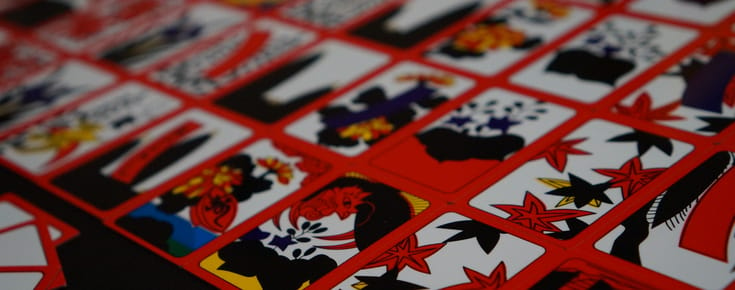

The artwork on these cards is beautiful in a very simple, elegant way. I’ll have to learn more about them. Thanks for sharing!
Isn’t it? I love the Japanese-style artwork on them. Hanafuda cards are great. 🙂
wow! even I’m japanese, I don’t know how to play Hanafuda though 🙂 interesting!
Not many people do! 🙂 Glad you found it interesting.